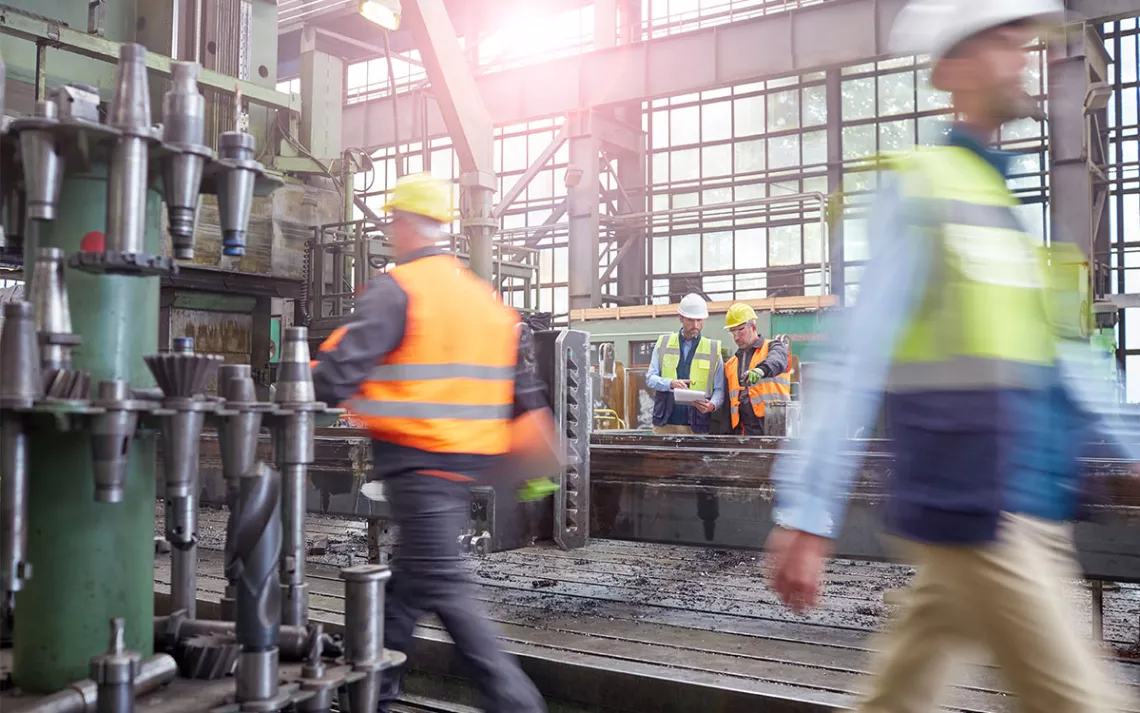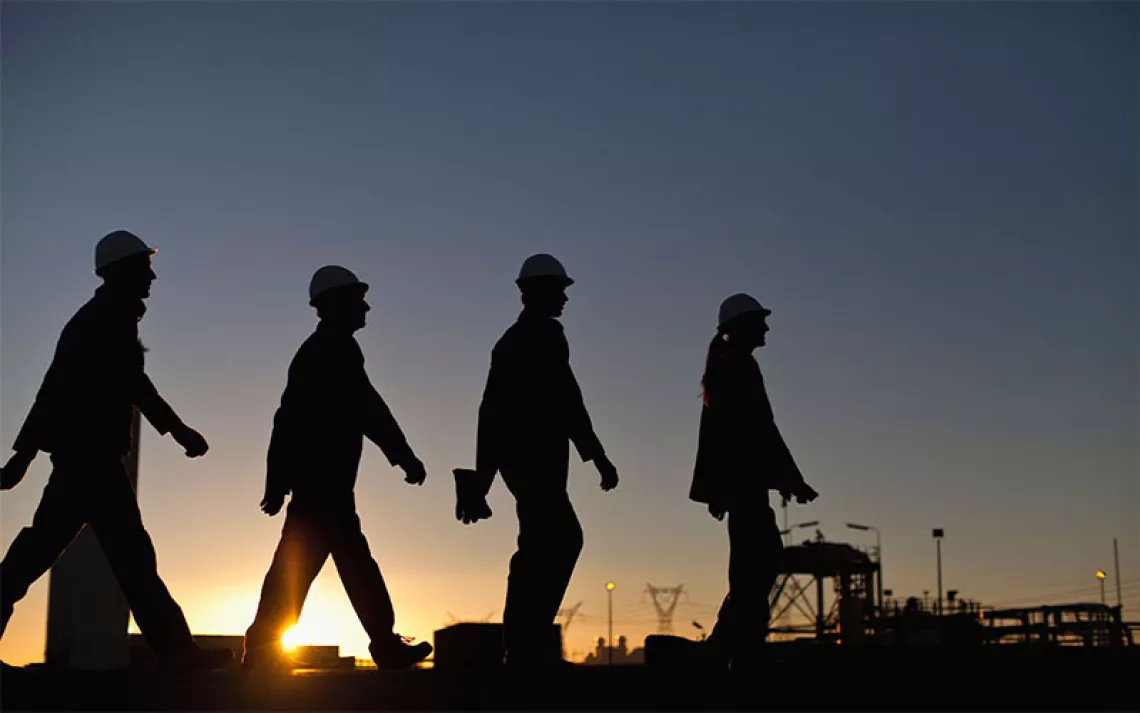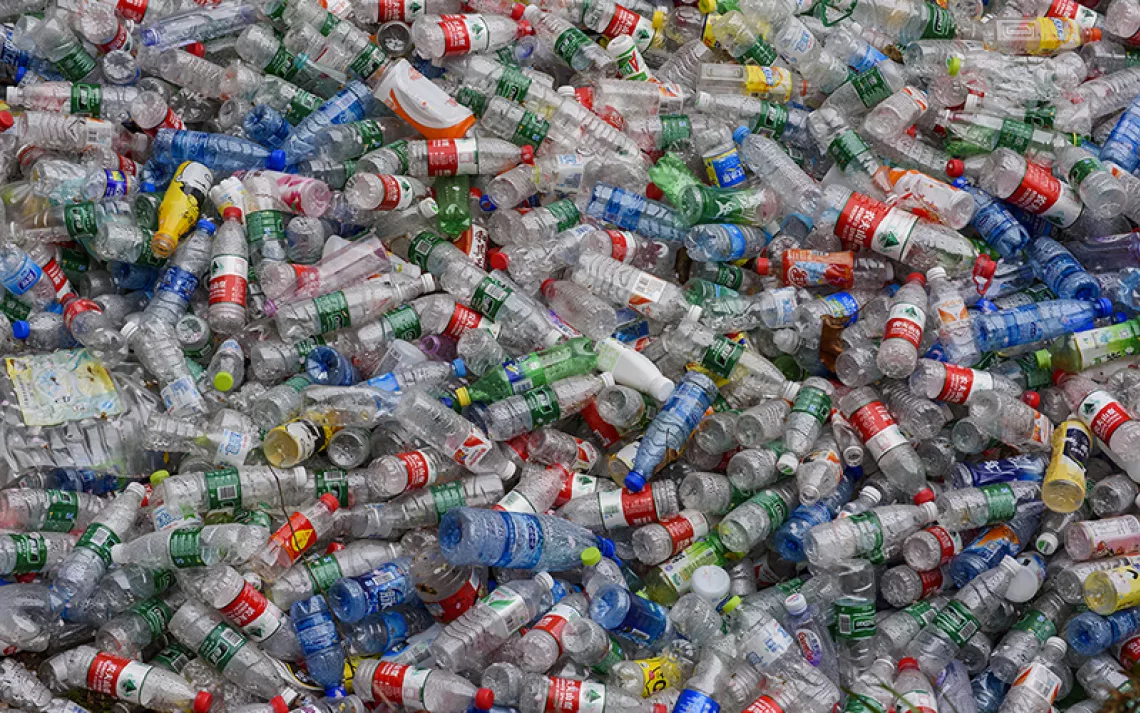It’s Time to Bust the Myths Surrounding the Clean Energy Economy
In truth, saving the planet is a path to prosperity

For every direct job in clean energy, even more indirect and induced jobs are created to support clean energy production and its supply chain. | Photo by Caia Image/Getty
Distributed by Trice Edney Newswire
“Made in the USA” is a tagline that should apply to every major piece of the clean energy economy. It is within our grasp. But first we need to bust some myths.
Earlier this month, clean energy and sustainability leaders from around the country got to tour the site of a new Qcells solar panel factory in Cartersville, Georgia. Once the new facility is up and running, Qcells will maintain the first fully integrated solar supply chain in the US—all right there in Georgia. Not far from Cartersville, the Qcells plant in Dalton, Georgia, has already shown how good-paying clean energy jobs can help communities and even give the workers and their families a sense of pride and purpose. The new plant will further demonstrate how onshoring clean energy supply chains can create even more good jobs and help us achieve energy independence, all while helping to meet our climate goals.
Yet there is a myth that seems to live in the minds of many people, that solving the world’s most critical and overarching problem—the climate crisis—must necessarily be all about sacrifice as opposed to widespread economic gain. It is an example of so-called conventional wisdom being, well, nonsense. This is nothing new. But it is a reminder to beware conventional wisdom pushed by fossil fuel interests over basic common sense and what we see right in front of us.
What is happening with Qcells in Georgia was spurred by investments from the 2022 Inflation Reduction Act (IRA). That law, along with the other crucial policies of the Biden-Harris administration—like the Bipartisan Infrastructure Law and its tariffs against China—is helping give rise to the boom in clean energy projects across this country and a boom in manufacturing jobs supporting them. The broader picture is of a powerful partnership between the public and private sectors to create a rising economic tide that lifts all boats.
A report last year by E2 analyzed job creation from clean energy projects in the first year following passage of the IRA. It found that for every direct job in clean energy, even more indirect and induced jobs were created to support clean energy production and its supply chain. The construction industry and the supply chains that feed it benefited the most, but “sectors ranging from health care and hospitality to retail trade and real estate will also benefit greatly.”
“We have to bust the myth that prioritizing sustainability and pro-environment practices is at odds with the interests of workers.”
We must continue to onshore our supply chains, to manufacture domestically the steel and other raw materials needed for infrastructure and every aspect of the next economy. Breakthroughs in manufacturing processes make it much cleaner to do here than in China, and it is American workers who will experience the economic windfall.
National Climate Advisor Ali Zaidi, who joined the group hosted by Qcells in Georgia, describes it all as a “manufacturing renaissance,” noting that “for too long, technologies were invented here and manufactured somewhere else.”
This partnership between the public and private sectors is also a model for how the climate movement must grow to meet its goals. Yet our movement has been stymied by the same sorts of myths that have led some to mistakenly believe the clean energy transition carries more economic cost than benefit.
The urgency of tackling the climate crisis is undeniable. We have just come out of the hottest summer on record. A recent report based on satellite data shows extreme wildfires have more than doubled over the past 20 years owing to climate change. Just this month, Southern California was at the mercy of three out-of-control wildfires—all in the midst of a major heat wave—that closed schools, forced resident evacuations, and made the air toxic to breathe. We know that fully transitioning from fossil fuels to clean, renewable energy is the only way to save our planet. And we need the most broad-based, inclusive movement possible to get it done.
I have spent my entire life deeply embedded in movements for change and justice—civil rights, environmental justice and conservation, workers’ rights. I have seen firsthand how much all our movements have in common, how our goals are often the same, and how the few who benefit from an unjust status quo always fight tooth and nail to keep us divided—and promote dangerous myths to do it.
Coming together to meet the existential challenge of the climate crisis means doing away with those myths. We have to bust the myth that the environmental movement is somehow “white”—while in fact people of color are not only among the most impacted by climate change and pollution, but we are also the most climate conscious voters. We have to bust the myth that prioritizing sustainability and pro-environment practices is at odds with the interests of workers—when in fact organized labor essentially helped launch the modern green movement. And, yes, we have to demolish the myth that the transition to the clean energy economy cannot be an unequivocal economic win for our country.
This past week was Climate Week. I was thrilled to be a part of the critical relationship building that happened between environmentalists and business leaders from a wide range of industries gathering in New York. Last year, the Sierra Club launched a new office of Green Ventures and Partnerships to build and strengthen those relationships and provide opportunities to more companies that want to make a difference. This is an all-hands-on-deck moment. If we answer the call, we will see a new era of prosperity that has the potential to reach every American.
 The Magazine of The Sierra Club
The Magazine of The Sierra Club



